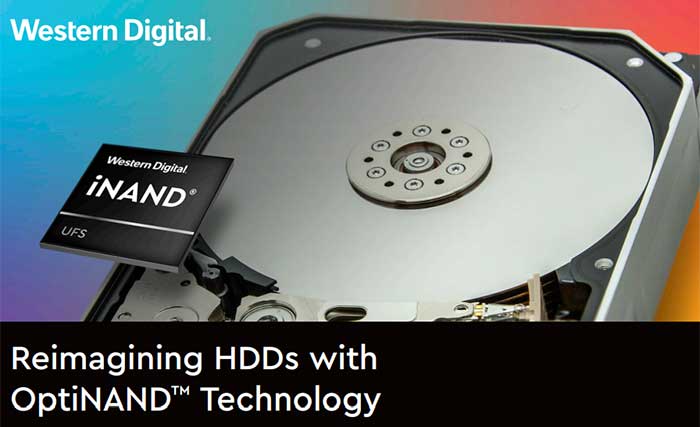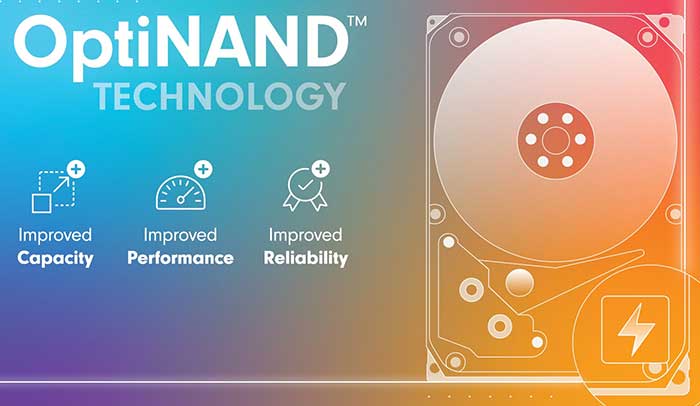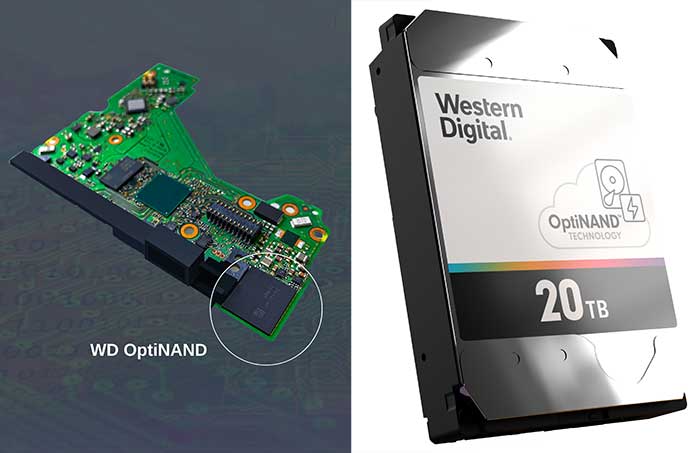On Tuesday, at its HDD Reimagine event, Western Digital introduced what it calls OptiNAND technology. From the name you might immediately conclude that this is some kind of rehashed SSHD technology that WD is putting forward, but it insists otherwise. Some key differences are that the embedded controller NAND isn't used as traditional data storage, and OptiNAND is a multi-tier architecture change which also includes a new SoC and proprietary firmware algorithm. The result is the best 20TB+ drives with enhanced capacity, performance, and reliability, says WD.

Accompanying the brief press release, WD has made a useful tech brief available (PDF) that gives one a better grasp of how OptiNAND works in practice. From reading through this info, it appears to be the case that the biggest benefit of the actual NAND within this solution is in the holding of HDD metadata.
WD says that "HDDs generate gigabytes of metadata that can be utilized to increase areal density," but this data easily grows to be too big for holding in DRAM, and would be slow to access from the HDD itself. Thus, the embedded iNAND flash and firmware comes into play as an economical / performance storage hierarchy sweet spot. Metadata is used by the HDD to increase areal density of the triple stage actuator (TSA)-based dense areal density.

We don't know the sizes of the flash memory chips WD is going to incorporate into its OptiNAND drives, but it says they are large enough to hold about 50x more data than previous drives could if there is an emergency power off (EPO) event, for example. That could save your bacon (data) if you don't have other safeguards in place.
Another big claim for OptiNAND is that it will increase reliability of WD's upcoming HDDs. WD says that thanks to this new tech it will be able to go ahead and extend the capability of energy-assisted PMR (ePMR) for multiple generations, and this will probably be broadly welcomed by customers. The use of other proven technologies like triple stage actuator (TSA), Energy-assisted magnetic recording (EAMR), and HelioSeal are set to continue.
Also interesting is that WD says that its new SoC will be able to address NAND in different modes, supporting "both SLC for write-heavy operations and TLC for read-heavy operations in the same device".

WD has already shipped samples of 20TB ePMR flash-enhanced drives with OptiNAND technology to select customers. It expects to add OptiNAND products to its purchasable portfolio later this year, and 50TB+ OptiNAND drives to emerge in the second half of this decade.













